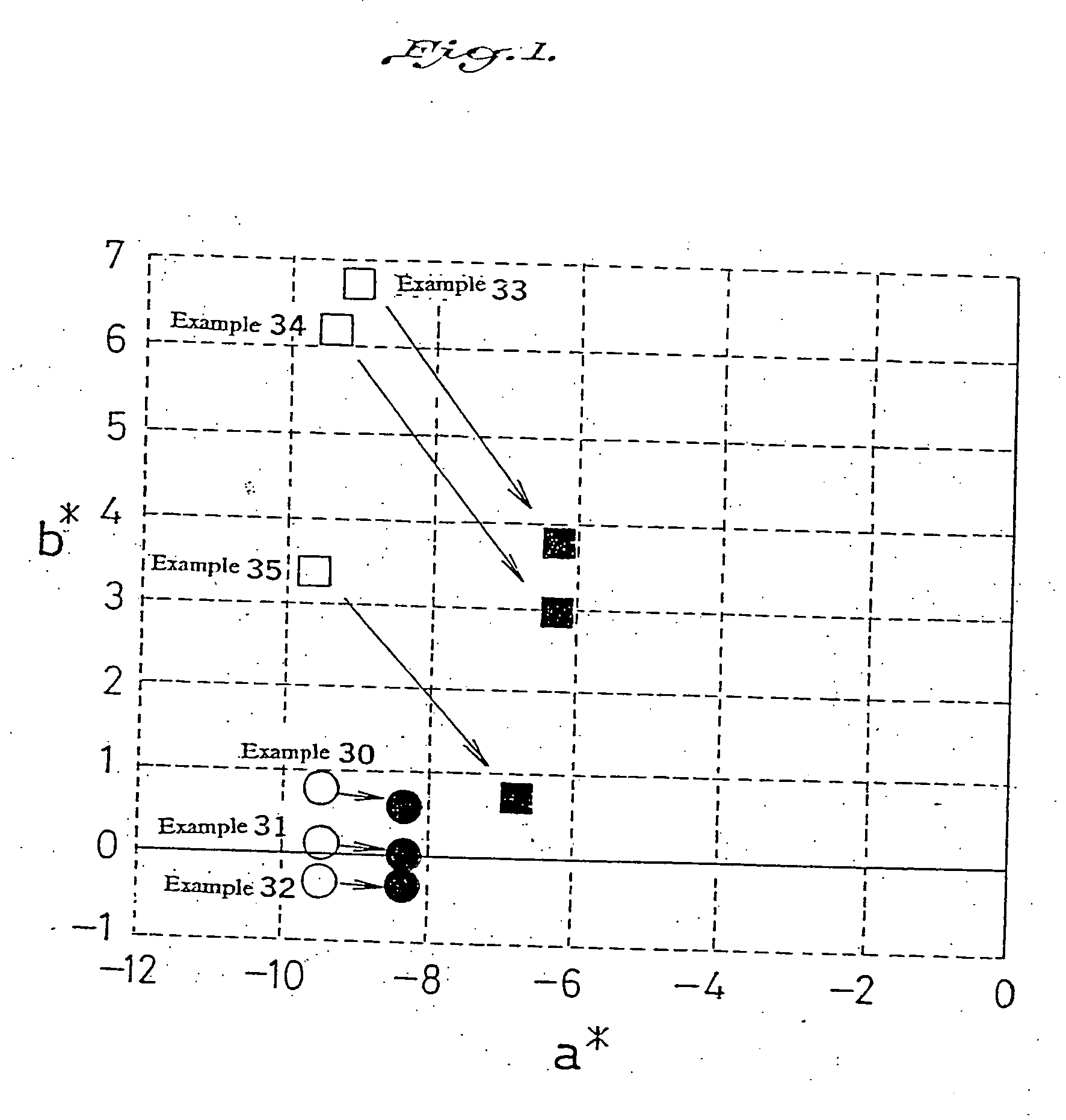Ultraviolet/infrared absorbent low transmittance glass
a technology of infrared absorbent and low transmittance glass, which is applied in the field of ultraviolet/infrared absorbent low transmittance glass, can solve the problems of increasing the cost of the batch, unpreferable for the environment, and large quantity of se, and achieves low ultraviolet transmittance, low or middle visible light transmittance, and low ultraviolet transmittance.
- Summary
- Abstract
- Description
- Claims
- Application Information
AI Technical Summary
Benefits of technology
Problems solved by technology
Method used
Image
Examples
examples
[0055] Hereinafter, the mode of carrying out the present invention will be described referring to some examples.
examples 1 through 42
[0056] Glass raw material is prepared by adding at least one of a group consisting of ferric oxide, titanium oxide, cerium oxide, cobalt oxide, metallic selenium, and nickel oxide into a standard soda-lime-silica glass batch composition, also adding carbonaceous reducing agent (concretely, coke powder etc.) at a ratio of about 0.01 parts by weight per 100 parts of the glass raw material therein, and mixing them. The glass raw material thus prepared is heated and melted in an electric furnace at 1500.degree. C. for 4 hours. The molten glass is flowed onto a stainless plate and annealed to the room temperature as long as 16 hours to obtain a 6 mm thick glass plate. The glass plate is then polished in such a manner that the thickness reduces to 4 mm to become a sample. Each sample is measured in the visible light transmittance by the C.I.E. illuminant A(YA), the total solar energy transmittance (TG), the ultraviolet transmittance by ISO 9050(TUV), the dominant wavelength by the illumin...
examples 36 , 37
Examples 36, 37, Comparative Example 5
[0079] Table 6 shows glass components and optical properties of Examples 36, 37 and Comparative Example 5 which are made in the same manner as Examples 1-35 except the glass components are different.
[0080] As shown in Table 6, Se in the glass with a very small amount decreases remarkably an excitation purity of the glass, while changing scarecely a color tone of the glass. More than 2 ppm of Se in the glass changes the color tone of the glass remarkably from green to green shade brown or green shade gray.
[0081] As detailed above, according to the present invention, an ultraviolet / infrared absorbent low transmittance glass, which exhibits low or middle visible light transmittance, low total solar energy transmittance, and low ultraviolet transmittance and which has an almost neutral color such as turquoise and deep green, can be provided.
[0082] The ultraviolet / infrared absorbent low transmittance glass having the almost neutral color such as turq...
PUM
| Property | Measurement | Unit |
|---|---|---|
| transmittance | aaaaa | aaaaa |
| visible light transmittance | aaaaa | aaaaa |
| visible light transmittance | aaaaa | aaaaa |
Abstract
Description
Claims
Application Information
 Login to View More
Login to View More - R&D
- Intellectual Property
- Life Sciences
- Materials
- Tech Scout
- Unparalleled Data Quality
- Higher Quality Content
- 60% Fewer Hallucinations
Browse by: Latest US Patents, China's latest patents, Technical Efficacy Thesaurus, Application Domain, Technology Topic, Popular Technical Reports.
© 2025 PatSnap. All rights reserved.Legal|Privacy policy|Modern Slavery Act Transparency Statement|Sitemap|About US| Contact US: help@patsnap.com

